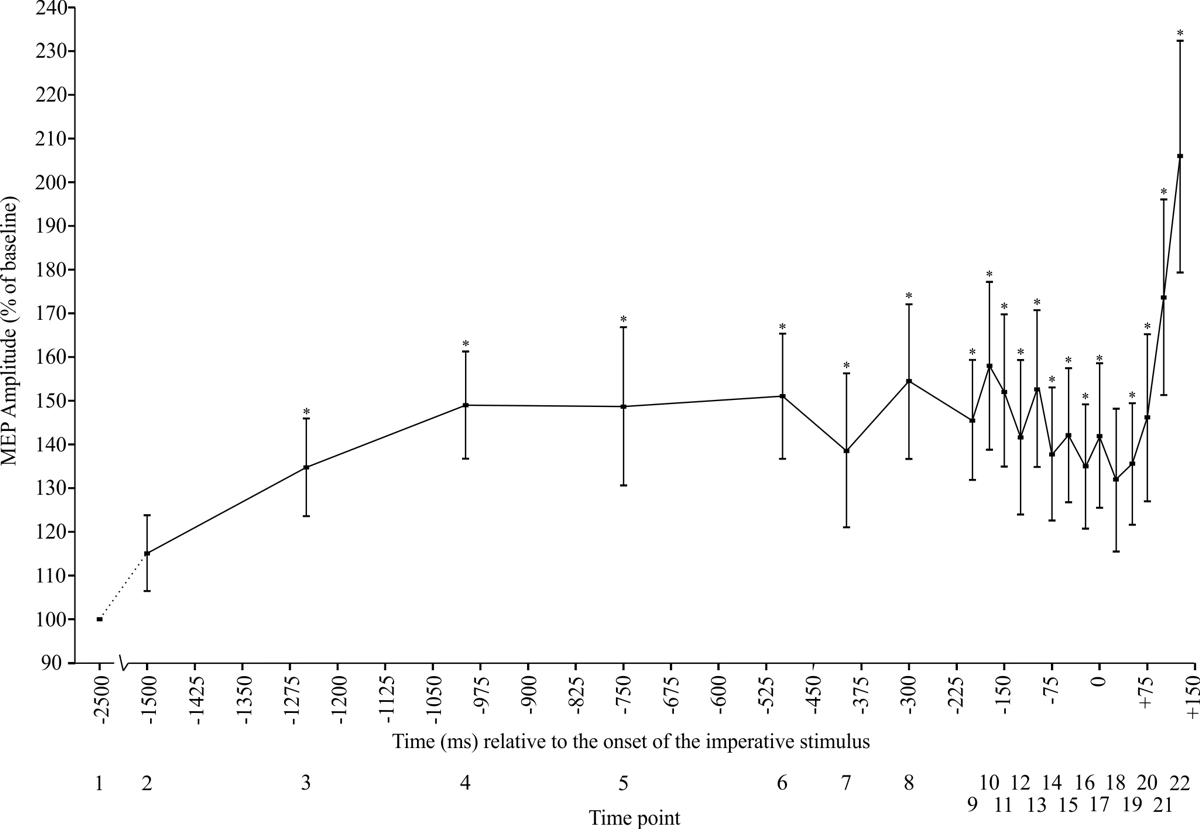This study investigated the entirety of the timecourse of cortico-spinal excitability changes during a reaction time task – from the time in between trials, and throughout the foreperiod and response interval. The results show a pattern of increase in excitability that occurs just after the “get ready” signal which is held until the appearance of the “go” signal.
Abstract:
“The production of movement in a simple reaction time task can be separated into two time periods: the foreperiod, which is thought to include preparatory processes, and the reaction time interval, which includes initiation processes. To better understand these processes, transcranial magnetic stimulation has been used to probe corticospinal excitability at various time points during response preparation and initiation. Previous research has shown that excitability decreases prior to the “go” stimulus and increases following the “go”; however these two time frames have been examined independently.
The purpose of this study was to measure changes in CE during both the foreperiod and reaction time interval in a single experiment, relative to a resting baseline level. Participants performed a button press movement in a simple reaction time task and excitability was measured during rest, the foreperiod, and the reaction time interval. Results indicated that during the foreperiod, excitability levels quickly increased from baseline with the presentation of the warning signal, followed by a period of stable excitability leading up to the “go” signal, and finally a rapid increase in excitability during the reaction time interval. This excitability time course is consistent with neural activation models that describe movement preparation and response initiation.”




